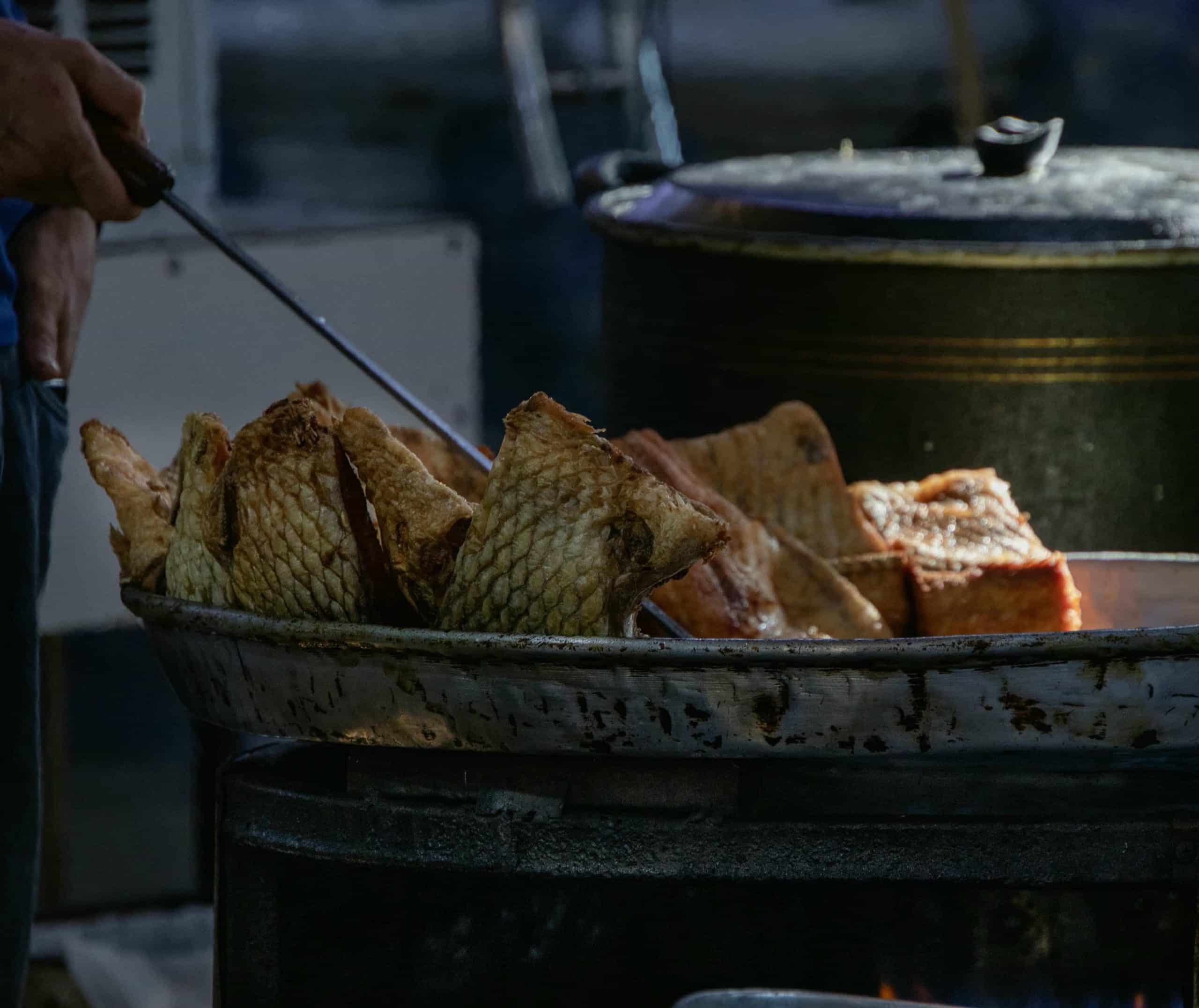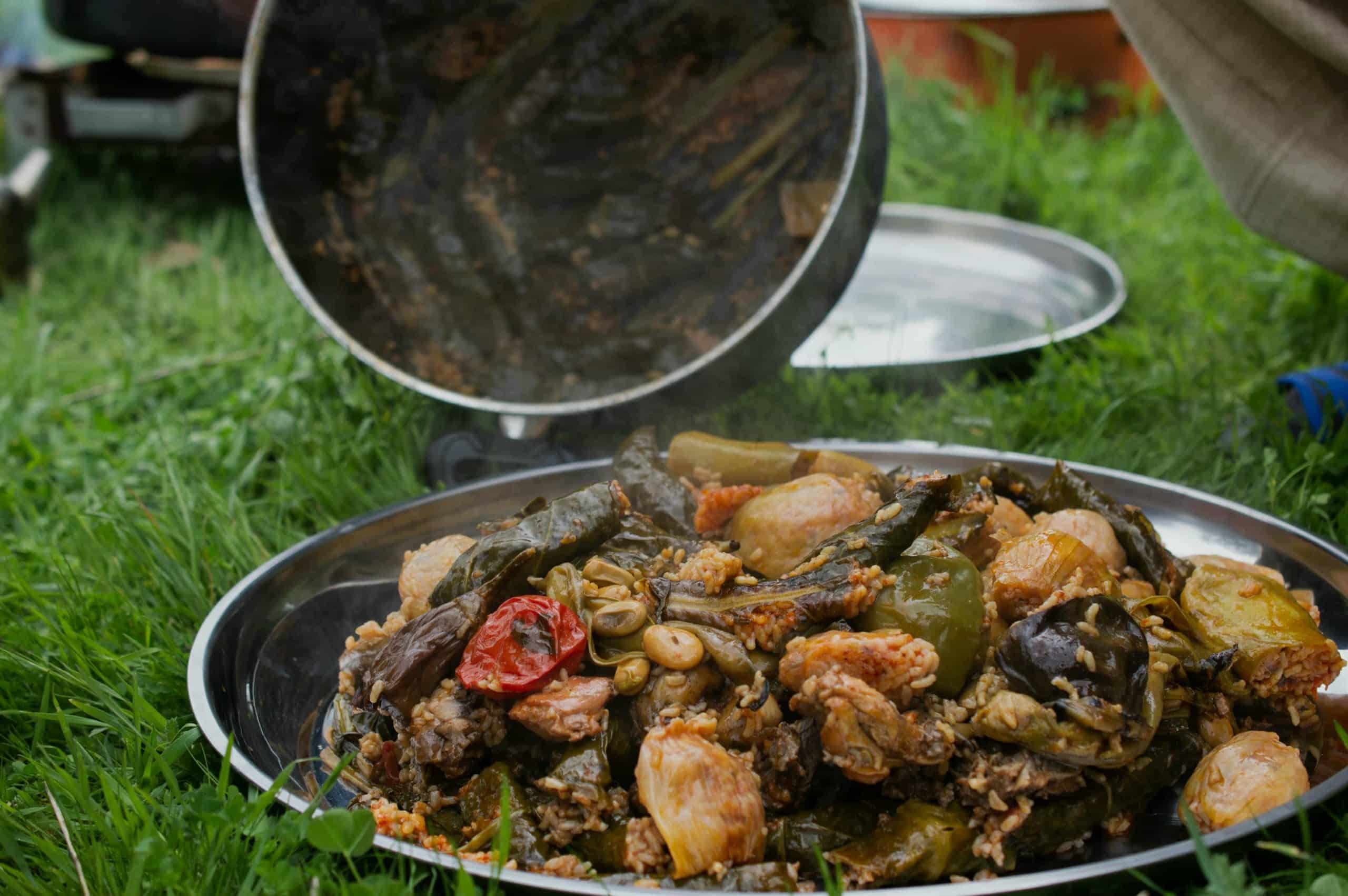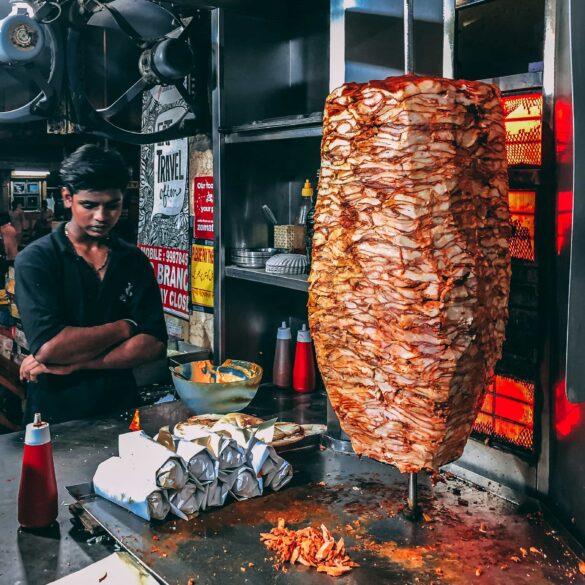Iraqi Food: Complete Guide to Authentic Middle Eastern Cuisine
The aroma of cardamom and cinnamon wafts through the air as saffron-tinted rice steams in traditional copper pots—this is the soul of Iraqi cuisine, where each dish tells a story spanning thousands of years. Having spent considerable time exploring Middle Eastern culinary traditions, I can honestly say that Iraqi food remains one of the most underappreciated treasures in the global culinary landscape.
What strikes me most about Iraqi cuisine is how it seamlessly blends ancient Mesopotamian traditions with influences from Persian, Turkish, and Arab cultures. It’s not just about the food—it’s about understanding a civilization that gave birth to agriculture itself1. The dishes carry the weight of history, yet they’re surprisingly approachable for modern home cooks.
Cultural Heritage Spotlight
Iraq is home to the ancient region of Mesopotamia, often called the “Cradle of Civilization.” This rich heritage directly influences Iraqi cuisine, with some cooking techniques dating back over 4,000 years. The country’s position along historic trade routes brought spices and ingredients from across the known world, creating the complex flavor profiles we see today.
I remember my first encounter with authentic Iraqi dolma—nothing had prepared me for the intricate balance of flavors. The rice wasn’t just rice; it was poetry. Each grain seemed to carry the essence of the spices, the love of the cook, and frankly, the soul of a people who’ve mastered the art of turning simple ingredients into something extraordinary.
The beauty of Iraqi cuisine lies in its accessibility—you don’t need exotic equipment or impossible-to-find ingredients. Most dishes rely on techniques and spices that have been refined over centuries, creating maximum flavor with minimal fuss. That said, there’s definitely a learning curve, and I’ll be honest about the challenges alongside the rewards.
“Iraqi cuisine is like a bridge between worlds—connecting ancient traditions with modern tastes, bringing together the best of Middle Eastern, Persian, and Mediterranean influences into something uniquely beautiful.”
What really excites me about sharing this knowledge is how Iraqi food brings people together. In Iraqi culture, meals are communal experiences—think massive platters of fragrant rice, tender lamb, and an array of pickled vegetables that make every bite different from the last. The portions are generous, the flavors are bold, and the hospitality is legendary.
Throughout this guide, I’ll share not just recipes and techniques, but the stories behind them. Because understanding Iraqi food means understanding a culture that values generosity, celebration, and the profound joy of sharing exceptional food with the people you care about.
Traditional Iraqi Dishes and Regional Specialties
Let me start with what I consider the crown jewel of Iraqi cuisine—masgouf. This isn’t just a dish; it’s practically a national obsession. The first time I witnessed the preparation of authentic masgouf along the Tigris River, I understood why Iraqis consider it their national dish2. The whole fish—typically carp—is butterflied, seasoned with a blend of turmeric, salt, and sometimes curry powder, then slow-roasted on specially designed stands over an open fire.
Masgouf: The Art of Iraqi Fish Grilling
What makes masgouf special isn’t just the cooking method—it’s the social ritual. Families gather around the fire, sharing stories while the fish slowly transforms. The skin becomes crispy while the flesh remains incredibly moist. It’s served with flatbread, sliced tomatoes, and pickled vegetables. For home cooks, you can adapt this using a gas grill, though purists might argue it’s not quite the same.
Moving on to what I call the “comfort food trinity” of Iraqi cuisine—kebab, dolma, and biryani. Each represents a different aspect of Iraqi culinary mastery. The kebab here isn’t your typical grilled meat; we’re talking about complex preparations like kebab halabi, where ground lamb is mixed with bulgur, spices, and fresh herbs, then formed into delicate footballs and either grilled or cooked in aromatic broths.
| Dish Name | Main Ingredients | Cooking Method | Serving Style |
|---|---|---|---|
| Masgouf | Whole carp, turmeric, salt | Open fire roasting | Communal sharing |
| Dolma | Grape leaves, rice, lamb | Slow braising | Individual portions |
| Kebab Halabi | Ground lamb, bulgur, spices | Grilling or braising | Platter style |
| Timman wa Ruz | Basmati rice, saffron, nuts | Steaming | Family style |
Now, let’s talk about dolma—and here’s where things get interesting. Iraqi dolma isn’t just about grape leaves (though those are fantastic). We’re talking about stuffed cabbage, stuffed onions, stuffed eggplant, and even stuffed fish. The rice filling typically includes ground lamb, pine nuts, and a spice blend that varies by region3. What I love about Iraqi dolma is how the cooking liquid becomes this incredible sauce—rich, tangy, and perfect for soaking up with bread.
Authentic Cooking Methods and Techniques
The secret to authentic Iraqi flavors lies in understanding the layering techniques. Take timman wa ruz (the famous Iraqi rice dish)—it’s not just about cooking rice. You’re creating layers of flavor: first, the rice is parboiled with whole spices like cardamom and cinnamon. Then comes the saffron layer, followed by the meat layer, and finally, the slow steaming process that allows all these flavors to meld together.
“In Iraqi cooking, patience is your most important ingredient. The slow cooking methods aren’t just tradition—they’re the key to developing the complex flavors that make our food unique.”
What consistently amazes me is how Iraqi cooks manage heat. The traditional tanoor (clay oven) cooking method creates temperatures and cooking environments that are difficult to replicate in modern kitchens. However, I’ve found that using a heavy-bottomed pot with a tight-fitting lid, combined with very low heat, can achieve similar results. The key is understanding that many Iraqi dishes rely on steam and residual heat rather than direct, aggressive cooking.
- Slow braising in heavy pots develops deep, complex flavors
- Steam cooking preserves delicate textures while infusing aromatics
- Open fire grilling adds essential smoky elements
- Layered cooking techniques create multi-dimensional taste profiles
Regional variations add another layer of complexity. Northern Iraqi cuisine, influenced by Kurdish traditions, tends to be heartier with more emphasis on grilled meats and dairy products. Southern Iraqi food, closer to the Gulf, incorporates more seafood and dates. Central Iraqi cuisine—think Baghdad and surrounding areas—represents the classical style most people associate with Iraqi food4.

Essential Ingredients and Spice Combinations
Here’s what I wish someone had told me when I first started exploring Iraqi cuisine—it’s all about the spice blends. And I mean this literally. The difference between mediocre Iraqi food and absolutely transcendent Iraqi food often comes down to understanding how these spices work together. The most important blend is baharat, which varies from family to family but typically includes black pepper, cardamom, cinnamon, cloves, nutmeg, and sometimes rose petals5.
Building Your Iraqi Spice Arsenal
Start with these essential spices and you’ll be able to tackle 80% of Iraqi recipes: baharat (all-spice blend), turmeric, sumac, dried lime (loomi), saffron, and za’atar. Each brings something unique—baharat provides warmth and complexity, turmeric adds earthiness and color, sumac brings tartness, and loomi adds an incredible citrusy depth that’s impossible to replicate with fresh limes.
But here’s the thing—and this took me years to figure out—the quality of your spices makes or breaks Iraqi dishes. I used to think spice was spice, but working with Iraqi home cooks taught me otherwise. The saffron needs to be real (not the fake stuff), the cardamom should be green and aromatic, and the dried limes should be black and incredibly fragrant. It’s worth investing in high-quality spices from Middle Eastern markets.
Let me share something that completely changed my approach to Iraqi cooking: the concept of “tempering” spices. In Iraqi cuisine, you don’t just add spices to your dish—you often bloom them in oil or ghee first. This technique, which I learned from an elderly Iraqi grandmother, releases essential oils and creates a completely different flavor profile. The difference is honestly night and day.
| Spice/Ingredient | Flavor Profile | Best Used In | Storage Tips |
|---|---|---|---|
| Baharat | Warm, complex, slightly sweet | Meat dishes, rice | Airtight container, 6 months |
| Loomi (Dried Lime) | Citrusy, tangy, umami | Stews, rice dishes | Whole limes, 2+ years |
| Sumac | Tart, lemony, fruity | Salads, grilled meats | Cool, dry place, 1 year |
| Saffron | Floral, honey-like, subtle | Rice dishes, desserts | Refrigerated, 2-3 years |
Seasonal Ingredients and Traditional Timing
Iraqi cuisine is deeply connected to seasonal availability, and this is where modern home cooks often miss the mark. Spring brings fresh herbs like parsley, mint, and cilantro that are essential for dishes like tabbouleh and fattoush. Summer is all about tomatoes, cucumbers, and eggplant—the vegetables that form the backbone of so many Iraqi dishes6.
What really fascinates me is how Iraqi cooks traditionally preserved the abundance of each season. Date syrup (dibs) preserved the sweetness of palm dates, pickled vegetables (turshi) captured the crispness of fresh produce, and dried herbs maintained flavor throughout the year. These preservation techniques aren’t just practical—they’re integral to the cuisine’s flavor profile.
“The secret to Iraqi cooking isn’t just in the recipe—it’s in understanding when to use which ingredients. A dish made with fresh herbs in spring tastes completely different from the same dish made with dried herbs in winter, and both have their place.”
Modern Kitchen Adaptations and Dietary Considerations
Now, let’s address the elephant in the room—how do you adapt traditional Iraqi recipes for modern kitchens and dietary needs? I’ve spent considerable time working on this, and honestly, it’s been quite the journey. The good news is that Iraqi cuisine is surprisingly adaptable, partly because it’s built on solid flavor principles rather than rigid techniques.
For vegetarians and vegans, Iraqi cuisine offers incredible options. Many traditional dishes are naturally plant-based or can be easily adapted. Fasolia (white bean stew), bamia (okra stew), and various lentil preparations are hearty, satisfying, and authentically Iraqi. The key is understanding that meat often serves as a flavoring agent rather than the star—you can achieve similar depth with vegetable broths and umami-rich ingredients like mushrooms and tomato paste7.
- Replace meat stocks with rich vegetable broths enhanced with dried mushrooms
- Use coconut oil instead of ghee for dairy-free cooking
- Incorporate more legumes and nuts for protein in vegetarian versions
- Adjust spice levels gradually—Iraqi food can be quite mild compared to other Middle Eastern cuisines
For those managing dietary restrictions, the spice-forward nature of Iraqi cuisine actually works in your favor. Gluten-free options abound when you focus on rice dishes, grilled meats, and vegetable preparations. Low-sodium adaptations work well because the complex spice blends provide so much flavor that you need less salt than you might expect.
Practical Home Cooking Tips and Techniques
After years of experimenting with Iraqi recipes in my own kitchen, I’ve learned that success often comes down to a few key principles that traditional recipes don’t always make explicit. The most important thing I can tell you is this: Iraqi cooking rewards patience and preparation. This isn’t fast food—it’s slow food that’s been perfected over generations.
Equipment You Actually Need
You don’t need a traditional tanoor, but having the right tools makes everything easier. A heavy-bottomed Dutch oven or enameled cast iron pot is essential for proper braising. A fine-mesh strainer is crucial for removing whole spices from rice. A good spice grinder (or dedicated coffee grinder) lets you make fresh spice blends. Everything else you probably already have.
Let me share a technique that took me embarrassingly long to master—making perfect Iraqi rice. The secret isn’t just in the cooking; it’s in the preparation. You need to wash the rice until the water runs clear, then soak it for at least 30 minutes. This removes excess starch and ensures separate, fluffy grains. The cooking process involves parboiling with whole spices, then layering with your protein and aromatics before the final steaming8.
Here’s something that might surprise you—Iraqi food is actually quite forgiving once you understand the principles. The slow cooking methods mean that slight timing variations rarely ruin a dish. If your stew needs more time, give it more time. If your rice seems too dry, add a bit more liquid. The key is tasting as you go and adjusting accordingly.
For beginners, I always recommend starting with simpler dishes like fasolia or bamia before attempting more complex preparations like dolma or biryani. Build your confidence with the spice combinations and cooking techniques before tackling the more involved recipes.
- Start with simple one-pot stews to understand flavor building
- Master rice cooking before attempting complex layered dishes
- Invest in quality spices—they make a dramatic difference
- Don’t rush the process—slow cooking develops the best flavors
- Taste and adjust seasonings throughout cooking
What really excites me about Iraqi cuisine is how it brings people together. The generous portions, the communal serving style, and the emphasis on hospitality create natural opportunities for connection. When you’re making Iraqi food, you’re not just cooking—you’re participating in a cultural tradition that values sharing and community9.
“Iraqi food is meant to be shared. The flavors are bold, the portions are generous, and every meal is a celebration of life, family, and the simple joy of eating well together.”
As you explore Iraqi cuisine, remember that you’re not just learning recipes—you’re connecting with a culinary tradition that spans millennia. Each dish carries stories, each spice blend represents family traditions, and each meal is an opportunity to honor the rich cultural heritage of this remarkable cuisine.
The beauty of Iraqi cuisine lies not just in its flavors, but in its ability to bring people together around the table. Whether you’re making a simple pot of fasolia or attempting an elaborate feast, you’re participating in a tradition that celebrates generosity, hospitality, and the profound satisfaction of sharing exceptional food with the people you care about.
References



